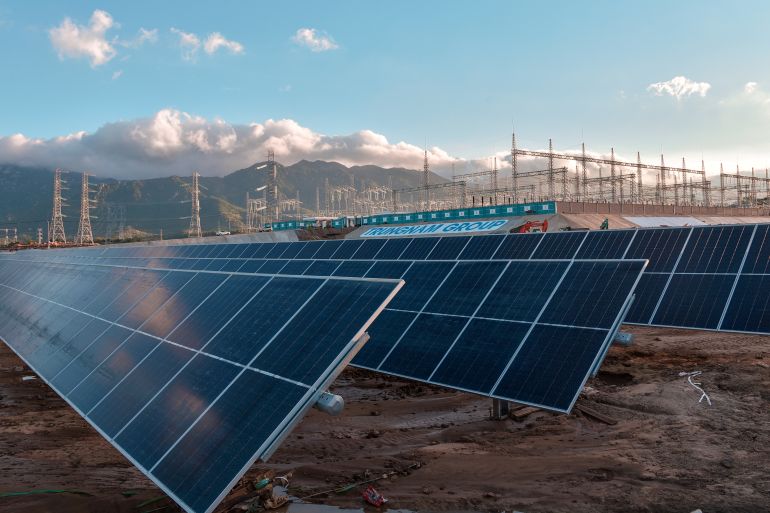‘The king of electricity’: Solar outshines other power sources
International Energy Agency says solar generators are cheaper than new coal- or gas-fired power plants in most countries.

Solar output is expected to lead a surge in renewable power supply in the next 10 years, the International Energy Agency said, with renewables seen accounting for 80 percent of growth in global electricity generation under current conditions.
In its annual World Energy Outlook published on Tuesday, the IEA said in its central scenario – which reflects policy intentions and targets already announced – renewables are expected to overtake coal as the primary means of producing electricity by 2025.
Keep reading
list of 4 itemsWho wins the race for electric cars?
What is Africa’s goal at COP28 as the climate summit begins?
Mozambique to present new $80bn energy transition plan at COP28
The combined share of solar photovoltaic (PV) and wind in global generation will rise to almost 30 percent in 2030 from 8 percent in 2019, it said, with solar PV capacity growing by an average 12 percent a year.
“I see solar becoming the new king of the world’s electricity markets,” IEA Executive Director Fatih Birol said. “Based on today’s policy settings, it is on track to set new records for deployment every year after 2022.”
Maturing technology and government support mechanisms have cut financing costs for major solar PV projects, the IEA said, helping to bring down output costs overall. Solar PV is now cheaper than new coal- or gas-fired power plants in most countries, it said.
Power generation from renewables is the only significant source of energy that continued to grow in 2020, the Paris-based agency added.
A more ambitious scenario, including for instance the adoption of net-zero emissions targets by 2050, would see PV electricity generation perform more strongly still, the report said.
Despite the increase in solar and wind power, carbon emissions are projected to pick up in 2021 after a 2.4 gigatonne (Gt) drop in 2020, and to exceed 2019 levels in 2027 before growing to 36 Gt in 2030, it added.
The IEA said gaps remain in many cases between long-term ambitions and specific near-term plans to curb emissions.
Integrating new wind and solar power will depend on adequate investment in all parts of the system, including distribution networks, the report added.
But revenue shortfalls – potentially arising from lower-than-expected demand, non-payment of bills, or the deteriorating finances of utilities in developing economies – could make power grids a weak link.